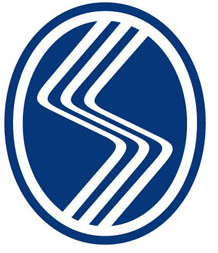Açık Akademik Arşiv Sistemi
Development of Surface Properties of High-Carbon Steel by Pulse Plasma Technique
JavaScript is disabled for your browser. Some features of this site may not work without it.
| dc.contributor.authors | Ozbek, Yildiz Yarali; Gokkaya, Tugce | |
| dc.date.accessioned | 2022-12-20T13:25:49Z | |
| dc.date.available | 2022-12-20T13:25:49Z | |
| dc.date.issued | 2022 | |
| dc.identifier.issn | 1040-2004 | |
| dc.identifier.uri | http://dx.doi.org/10.1080/10402004.2022.2079035 | |
| dc.identifier.uri | https://hdl.handle.net/20.500.12619/99452 | |
| dc.description | Bu yayının lisans anlaşması koşulları tam metin açık erişimine izin vermemektedir. | |
| dc.description.abstract | The surface of DIN 115CrV3 (high carbon steel) was chosen for the plasma pulse process. Different process parameters such as distance and number of pulses were tested. The effects of pulse plasma treatment on the morphology, phase, and crystallographic orientation of DIN 115CrV3 steel were analyzed. The cross section of modified surfaces was examined by optical microscope and scanning electron microscopy (SEM). The structure in the steel surface layer changes to nitride and an austenite phase is formed. The formed structure is composed of columnar and fine grains. X-ray diffraction (XRD) analysis was performed on the modified surface. The existence of complex phases and hard phases was shown in the modification layer. The microhardness was investigated before and after treatment using a microhardness tester. The hardness of treated steels was increased from 250 HV to 1600 HV after pulse plasma treatment. Wear testing of the modifed surface used a CSM linear wear test machine. The reciprocating wear method was preferred. Wear rate was calculated using CSM wear software. The friction coefficient and wear values were varied in accordance with parameters. The friction coefficient of treated samples was decreased, while the wear rate increased to four times than that of untreated samples. The mechanical properties of the surface, such as hardness and wear resistance, were improved after pulse plasma treatment. The SEM-energy-dispersive spectroscopy (EDS) analyses, atomic force microscopy (AFM), and three-dimensional (3D) profilometer techniques were used to investigate the worn surfaces of specimens. The surface of the treated sample was shown to experience less deformation during the wear test. | |
| dc.language | English | |
| dc.language.iso | eng | |
| dc.relation.isversionof | 10.1080/10402004.2022.2079035 | |
| dc.subject | Engineering | |
| dc.subject | Pulse plasma | |
| dc.subject | high carbon steel | |
| dc.subject | surface modification | |
| dc.subject | hardness | |
| dc.subject | linear wear | |
| dc.title | Development of Surface Properties of High-Carbon Steel by Pulse Plasma Technique | |
| dc.identifier.volume | 65 | |
| dc.identifier.startpage | 695 | |
| dc.identifier.endpage | 704 | |
| dc.relation.journal | TRIBOLOGY TRANSACTIONS | |
| dc.identifier.issue | 4 | |
| dc.identifier.doi | 10.1080/10402004.2022.2079035 | |
| dc.identifier.eissn | 1547-397X | |
| dc.contributor.author | Ozbek, Yildiz Yarali | |
| dc.contributor.author | Gokkaya, Tugce | |
| dc.relation.publicationcategory | Makale - Uluslararası Hakemli Dergi - Kurum Öğretim Elemanı |
Files in this item
| Files | Size | Format | View |
|---|---|---|---|
|
There are no files associated with this item. |
|||











